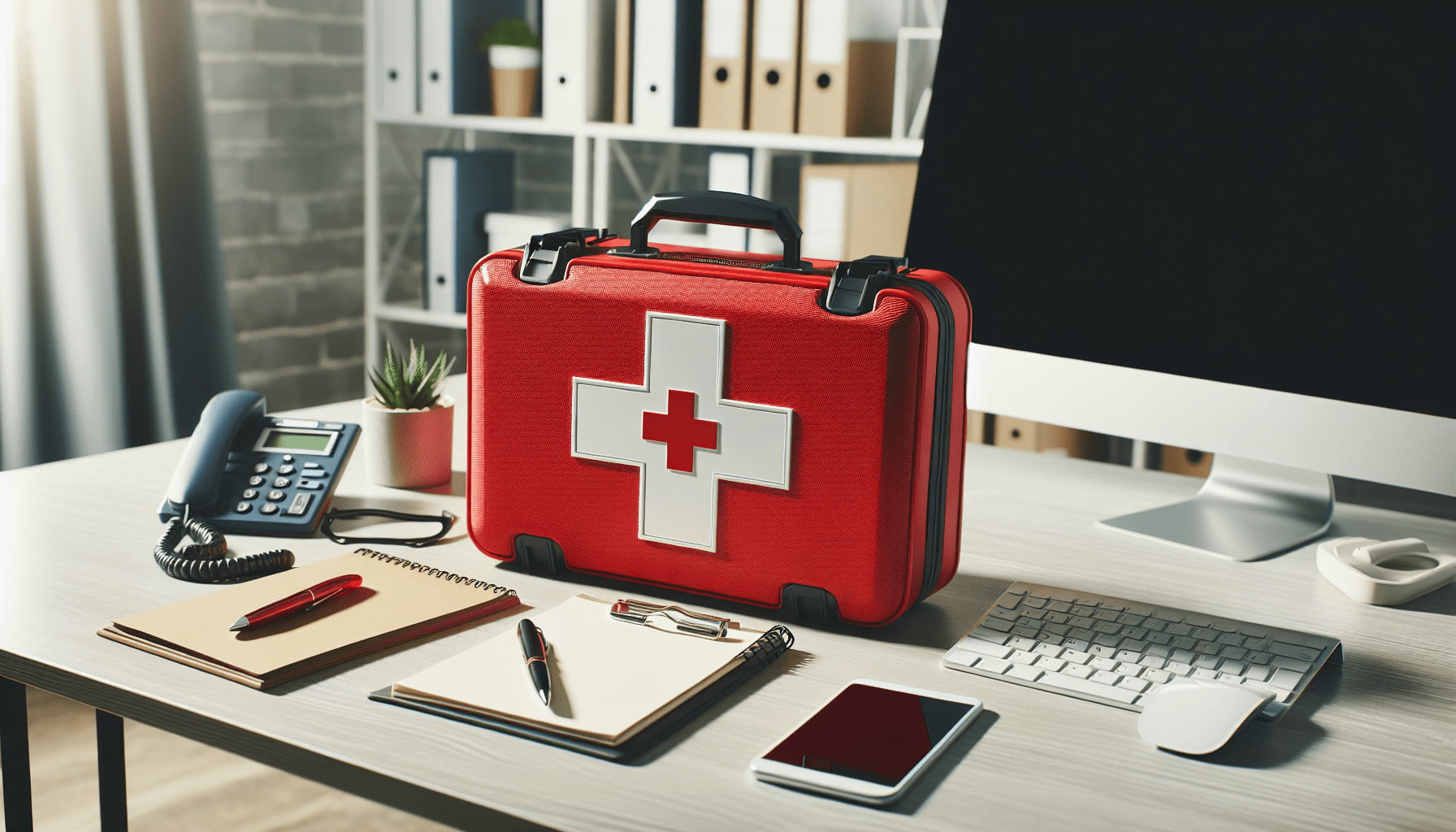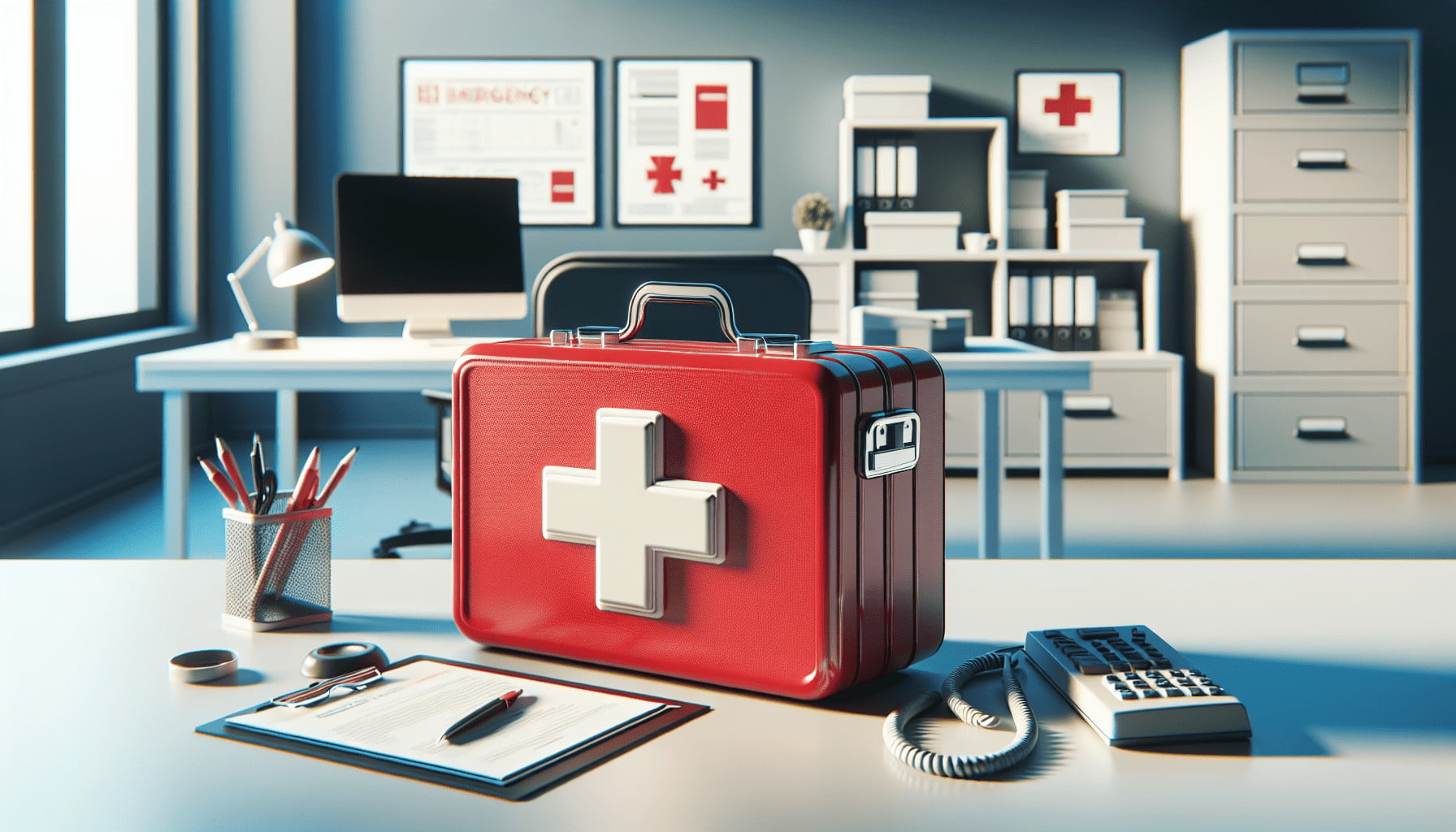Have you ever wondered what would happen if your workplace faced a sudden emergency? Emergencies can strike without warning, and being unprepared can have serious consequences. Whether you’re an employee or employer, understanding emergency preparedness is crucial for ensuring everyone’s safety. Let’s dive into what you need to know and what steps can be taken to be better prepared.

Understanding Emergency Preparedness
Why is Emergency Preparedness Important?
First things first, why is this important? Well, an unplanned emergency can result in chaos, injuries, and even fatalities. Having a well-documented and practiced emergency preparedness plan can help mitigate these risks. Preparedness enhances your ability to respond quickly and effectively, thereby protecting lives, property, and business operations.
Types of Emergencies to Consider
When we talk about emergencies, it’s not just about fires or earthquakes. Various types of emergencies can impact your workplace. These include:
- Natural Disasters: Earthquakes, floods, hurricanes, and tornadoes.
- Man-Made Incidents: Fires, chemical spills, and workplace violence.
- Health Emergencies: Pandemics and outbreaks of infectious diseases.
Each type of emergency requires different preparation and response strategies.
Roles and Responsibilities
Both employees and employers have critical roles to play in emergency preparedness. Understanding these responsibilities can make the difference in how well you navigate through an emergency.
Employer Responsibilities
Employers have the primary responsibility to ensure a safe working environment. Here’s a concise list of what’s expected from them:
| Responsibility | Description |
|---|---|
| Risk Assessment | Identify potential hazards and evaluate risks. |
| Emergency Plan Development | Develop a comprehensive emergency plan tailored to specific risks. |
| Training and Drills | Conduct regular training sessions and emergency drills. |
| Communication Systems | Establish reliable communication channels. |
| Safety Equipment | Ensure availability and maintenance of safety equipment. |
In essence, the employer must lay the groundwork for a robust emergency preparedness program.
Employee Responsibilities
Employees aren’t off the hook either; they have their own set of responsibilities:
| Responsibility | Description |
|---|---|
| Participation in Training | Engage actively in training and drills. |
| Familiarity with Emergency Procedures | Know the emergency exits, assembly points, and emergency contact numbers. |
| Reporting Hazards | Inform management about any potential hazards or gaps in the emergency plan. |
| Personal Preparedness | Keep personal emergency kits and understand personal emergency roles. |
Your participation in these activities can help ensure that you and your coworkers are as prepared as possible.
Developing an Emergency Preparedness Plan
Creating an emergency preparedness plan isn’t a one-size-fits-all task. Here’s a step-by-step guide to help you get started.
Conduct a Hazard Vulnerability Assessment (HVA)
The first step in developing an emergency preparedness plan is conducting a Hazard Vulnerability Assessment. This process helps you identify potential hazards and assess their impact on your workplace.
- Identify Hazards: Make a list of all possible natural and man-made emergencies.
- Evaluate Risks: Assess the likelihood and potential impact of these hazards.
- Develop Strategies: Create prevention and response strategies for each identified risk.
Building the Plan
After identifying the hazards, it’s time to build a comprehensive plan.
- Emergency Contact Information: Ensure that you have an up-to-date list of emergency contacts, including local emergency services.
- Evacuation Routes: Develop and clearly mark evacuation routes and assembly points.
- Communication Plan: Outline how information will be disseminated during an emergency.
- Roles and Responsibilities: Define roles for employees during an emergency.
- Resources and Equipment: List out necessary resources and safety equipment required during an emergency.
- Training and Drills: Include a schedule for regular training and drills to keep everyone prepared.
Testing and Updating the Plan
Having a plan is great, but testing it is crucial to ensure it works.
- Regular Drills: Conduct regular emergency drills to test the effectiveness of your plan.
- Feedback and Improvement: After each drill, gather feedback and make necessary adjustments to improve the plan.
- Periodic Reviews: Review and update the emergency plan at least annually or whenever there are significant changes in operations.
Communication During Emergencies
Effective communication can make a world of difference during an emergency. It can help in quick decision-making and ensure timely assistance.
Establishing Communication Channels
Here are some ways to establish reliable communication channels:
- Emergency Alert Systems: Use alarms, PA systems, or digital alert systems to inform employees about emergencies.
- Mass Notification Systems: Use emails, text messages, or apps to send out emergency notifications.
- Two-way Radios: Provide two-way radios for instant communication among emergency response team members.
Guidelines for Communication
Keeping your communication clear and concise during emergencies is vital. Here are some guidelines:
- Be Direct: Use simple language and be as direct as possible.
- Stay Calm: A calm demeanor can help in communicating the message effectively.
- Reiterate Key Information: Ensure that vital information such as evacuation routes and assembly points are repeated.

Training and Drills
Training and drills are the backbone of any effective emergency preparedness plan. They ensure that both employees and employers are well-versed in the actions to take during an emergency.
Types of Training
Several types of training can be conducted to prepare for different kinds of emergencies:
| Training Type | Description |
|---|---|
| Fire Drills | Practice evacuating the building during a fire. |
| First Aid Training | Teach basic first aid skills and the use of AEDs. |
| Shelter-in-Place Drills | Prepare for scenarios where evacuating is not an option. |
| Active Shooter Drills | Train employees on what to do during a situation involving an active shooter. |
| Chemical Spill Response | Educate employees on how to safely handle and respond to a chemical spill. |
Conducting Effective Drills
Many workplaces conduct drills, but doing it effectively means taking a structured approach:
- Set Objectives: Define what you aim to achieve with the drill.
- Plan the Drill: Schedule and provide advance notice to participants.
- Execute: Carry out the drill, simulating real emergency conditions as closely as possible.
- Evaluate: After the drill, gather feedback and evaluate what went well and what needs improvement.
- Update Plan: Use the insights gathered to make necessary updates to the emergency preparedness plan.
Post-Emergency Actions
Once the immediate danger is over, there are still several actions to take to ensure safety and return to normal operations.
Immediate Steps
- Assess Injuries: First things first, check for any injuries and administer first aid as needed.
- Safety Inspection: Inspect the workplace to ensure it’s safe before allowing employees to return.
- Report the Incident: Document the incident and report it to the appropriate authorities if necessary.
Long-Term Actions
- Emotional Support: Provide counseling services for employees who may be traumatized by the event.
- Review and Learn: Conduct a thorough review of the incident to learn what worked and what didn’t.
- Update Plans: Make any necessary adjustments to the emergency preparedness plan based on the lessons learned.
Conclusion
Emergency preparedness in the workplace is not just a regulatory requirement but a moral obligation to ensure the safety and well-being of everyone involved. By understanding the types of emergencies, defining clear roles and responsibilities, developing a comprehensive plan, and conducting regular training and drills, you can make your workplace a safer environment. Remember, the key to effective emergency preparedness is ongoing commitment and continuous improvement. So, take the time to prepare today, because in an emergency, every second counts.
